Today’s Current Affairs: 18th September 2025 for UPSC IAS exams, State PSC exams, SSC CGL, State SSC, RRB, Railways, Banking Exam & IBPS, etc
Table of Contents
Genocide Convention:
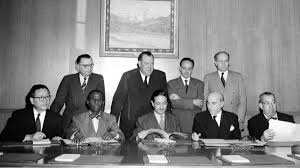
A UN commission has concluded that Israel is committing genocide in Gaza
- Accusing leaders including Prime Minister Benjamin Netanyahu of incitement. The panel, led by Navi Pillay, found Israeli forces guilty of four of the five genocidal acts under the 1948 Genocide Convention killing, causing serious harm, creating destructive living conditions, and preventing births citing explicit statements by officials as proof of intent. Israel rejected the findings as “distorted and false,” demanding the commission’s abolition.
- Meanwhile, the Israeli military launched a new ground offensive in Gaza City, advancing on the territory’s largest urban center.
- 1948 Genocide Convention is Convention on the Prevention and Punishment of the Crime of Genocide (CPPCG).
- Adopted by the UN General Assembly on 9 December 1948 (Resolution 260 A (III)); entered into force on 12 January 1951.
- First human rights treaty of the UN era, aimed at preventing and punishing genocide in times of peace or war.
- Definition of Genocide (Article II): Certain acts committed with intent to destroy, in whole or in part, a national, ethnic, racial, or religious group, including:
- Killing members of the group.
- Causing serious bodily or mental harm.
- Inflicting living conditions to bring about destruction.
- Preventing births within the group.
- Forcibly transferring children of the group.
- States must prevent and punish genocide, whether committed by state actors or individuals.
- Punishment (Article IV): Applies to constitutionally responsible rulers, officials, and private individuals.
- Court jurisdiction: Cases may be tried in national courts or before an international tribunal (like the International Court of Justice, as seen in Bosnia v. Serbia, The Gambia v. Myanmar).
India Rises to 38th in Global Innovation Index 2025:
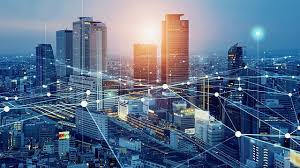
India climbs to 38th in Global Innovation Index 2025, ranking ahead in knowledge outputs and leading in lower-middle-income economies.
- This ranking places India ahead of its 2020 position of 48, and importantly, #1 among lower-middle-income economies and in the Central and Southern Asia region.
- The GII 2025, published by WIPO, assesses 139 countries using 80+ indicators spread across seven pillars,
- Institutions
- Human capital and research
- Infrastructure
- Market sophistication
- Business sophistication
- Knowledge and technology outputs
- Creative outputs
- The index provides insights into how countries are fostering innovation-led development and their ability to convert R&D into economic output.
India’s Unemployment Rate Falls to 5.1%:
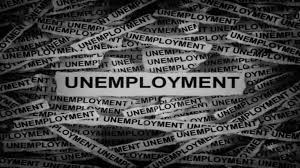
India’s job market showed encouraging signs in August 2025, with the country’s overall unemployment rate declining to 5.1%, according to the Periodic Labour Force Survey (PLFS) released by the Ministry of Statistics and Programme Implementation (MoSPI).
- This marks the second consecutive monthly decline, down from 5.6% in June and 5.2% in July, signaling resilience in both urban and rural employment trends
Highlights of the PLFS Data
- Overall Unemployment Rate (15+ years): Declined to 5.1% in August 2025, lowest in three months.
- Male Unemployment: Dropped to a five-month low of 5.0%.
- Urban male UR: 6.6% (July) → 5.9% (August)
- Rural male UR: 4.5% (lowest in 5 months)
- Rural Employment Recovery: Rural unemployment rate fell from 5.1% in May → 4.3% in August.
- Rise in Female Workforce Participation : One of the most notable trends is the rise in women’s participation in the labour market.
Typhon missile system: U.S. and Japan to withdraw
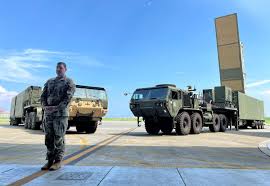
China has urged the U.S. and Japan to withdraw the U.S.-developed Typhon missile system
- Unveiled for the first time in Japan during the Resolute Dragon joint exercises at Iwakuni air station. Japan confirmed the system would not be fired but said its deployment strengthens deterrence amid a worsening security environment. Beijing expressed strong opposition, accusing the two countries of ignoring its concerns.
- The Typhon system, part of U.S. Army modernization, is a truck-based launcher using modified SM-6 and Tomahawk missiles.
- Typhon Missile System developer: United States Army, as part of its Mid-Range Capability (MRC) program under Army modernization.
- Publicly showcased in Japan in 2025 during the Resolute Dragon joint exercises.
- Platform: Truck-based, trailer-mounted ground launch system.
- Missile Types: Launches modified versions of
- SM-6 (Standard Missile-6): Surface-to-air missile with extended range, capable of ballistic and cruise missile defense, as well as anti-ship roles.
- Tomahawk cruise missile: Long-range, precision strike, land-attack missile.
- Range Category: Falls into the mid-range missile class (roughly 500–1,800 km)
- Purpose: Designed to fill the gap between shorter-range systems (like HIMARS) and long-range hypersonic weapons, giving the U.S. Army the ability to strike ships and land targets.
- Strategic Significance: Enhances U.S. and allied deterrence capabilities in the Indo-Pacific, but seen by China as destabilizing to regional security.
Unified Pension Scheme (UPS) : In News

Central government employees have until September 30 to opt for the new Unified Pension Scheme (UPS)
- The UPS, introduced as an optional switch for employees hired before January 1, 2004, assures a pension of 50% of the average basic pay of the last 12 months.
- It requires contributions of 10% of basic pay plus DA from employees and 14% from the government.
- However, interest is low because under the Old Pension Scheme (OPS), employees contribute nothing yet receive the same 50% pension on last drawn basic pay.
- Many employee groups argue the UPS and market-linked NPS are less beneficial and continue to demand a return to OPS.
Unified Pension Scheme (UPS):
- Introduced by the Government of India in 2025 as an optional scheme for central government employees.
- For employees hired before January 1, 2004, who are currently under the Old Pension Scheme (OPS).
- Nature: A one-time, optional switch—not mandatory.
- Key Features:
- Assured Pension: 50% of the average basic pay of the last 12 months of service.
- Contribution: Employee – 10% of basic pay + Dearness Allowance (DA); Government – 14%.
- Comparison with OPS:
- OPS: No employee contribution; pension = 50% of last drawn basic pay.UPS: Employee contributes 10%, but pension formula is nearly the same.
International Seabed Authority (ISA) : India Received landmark licence
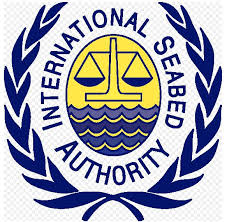
India has received a landmark licence from the International Seabed Authority (ISA) to explore polymetallic sulphide deposits in the Carlsberg Ridge.
- It is a 300,000 sq km area of the northwest Indian Ocean and Arabian Sea.
- This is the world’s first licence of its kind, granting India exclusive rights to survey and potentially exploit minerals like manganese, cobalt, nickel, and copper critical for batteries, electronics, and renewable energy.
- India already holds ISA licences in the Central Indian Ocean Basin (till 2027) and the Indian Ocean Ridge (till 2031).
- The Carlsberg Ridge licence strengthens India’s role in securing critical mineral supply chains and counters competition from countries such as China.
- However, deep-sea mining raises environmental concerns. India has committed to ecological assessments while pursuing its deep-ocean mineral strategy.
- The initiative is backed by the global framework of UNCLOS and regulated by the International Seabed Authority, which oversees seabed resources in areas beyond national jurisdiction.
International Seabed Authority (ISA)
- Establishment: Created in 1994 under the United Nations Convention on the Law of the Sea (UNCLOS), following the 1994 Agreement on Part XI of UNCLOS.
- Headquarters: Kingston, Jamaica.
- Mandate: Regulates exploration and potential exploitation of mineral resources in the international seabed area (the “Area”) which lies beyond national jurisdiction, considered the “common heritage of mankind.”
- Functions:
- Granting exploration and mining licences for deep-sea minerals such as polymetallic nodules, sulphides, and cobalt-rich crusts.
- Ensuring equitable sharing of benefits from seabed resources among all member states.
- Protecting the marine environment through regulations and mandatory environmental impact assessments.
- Membership: 167 countries + European Union.
- Key decision-making bodies; the Legal and Technical Commission provides expert recommendations.
World Patient Safety Day:

On September 17, the world observes World Patient Safety Day. It serves as a reminder of the continuing challenge of unsafe medical care across the globe.
- According to the WHO, one in 10 patients hospitalised globally suffers harm during treatment.
- In outpatient settings, the risk rises to four in 10 patients.
- In India, the shift in disease burden from communicable to non-communicable diseases (NCDs) like diabetes, cancer, cardiovascular and mental health disorders require prolonged and repeated care, creating more points where safety lapses can occur
- In acute care burden, where requirement is of multi-specialty involvement, inadequate coordination often leads to preventable errors.
- In India, despite progress in infrastructure and medical technology, unsafe health care persists due to a combination of overburdened health providers and uninformed, passive patients.
NaMo App Launches 15-Day Seva Campaign for PM’s Birthday:
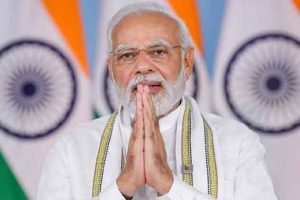
To commemorate Prime Minister Narendra Modi’s birthday on 17 September, the NaMo App has launched a 15-day digital citizens’ engagement initiative titled Seva Parv 2025. The campaign will run until 2 October, aligning with Mahatma Gandhi’s birth anniversary and aims to inspire a spirit of service and nationalism.
- Seva Parv 2025 includes a series of nine interactive activities designed to foster public participation in voluntary acts and deepen citizen involvement with governance and national pride.
Activities:
- Sabka Saath, Sabki Seva – Offers predefined tasks like tree plantation, blood donation, and other community services.
- AI Shubhkamna Reel – Lets users generate personalised birthday wishes for PM Modi using AI-generated audio and scripts based on shared user details.
- Virtual Exhibition – Showcases milestones from PM Modi’s journey.
- Selfie with PM – A digital feature allowing users to create images with PM Modi.
- Discover Your Modi Trait – Compares user qualities with the Prime Minister’s values.
- Know Your NaMo Quiz – Tests knowledge about PM Modi’s life and leadership.
- NaMo Book Collection – Curated content on Modi’s life and policies.
- NaMo Merchandise – Offers themed merchandise.
- World Wishes PM Modi – Allows users worldwide to send birthday wishes.
Election Commission updates EVM ballot paper design:
The Election Commission of India (ECI) has announced a revision in the design of Electronic Voting Machine (EVM) Ballot Papers. The updated guidelines focus on enhanced visibility, uniformity, and readability to benefit voters across India. This change is part of a broader set of 28 initiatives introduced by the Election Commission in the past six months, aimed at streamlining electoral processes and making voting more accessible and user-friendly. For government exam aspirants, this update is important under topics like electoral reforms, EVMs, and governance improvements.
World Bamboo Day 2025:
World Bamboo Day 2025 will be observed on 18 September across the globe to promote awareness about bamboo as a sustainable and versatile resource. Often called “green gold”, bamboo is vital for rural livelihoods, environmental protection, and innovation in design and industry. India, as one of the largest bamboo producers, plays a significant role in bamboo promotion through initiatives like the National Bamboo Mission. For aspirants, this day is highly relevant in the context of environment, rural economy, and sustainable development goals (SDGs)
Bharat Forge CMD Baba Kalyani receives ASME Holley Medal for engineering innovation:
Baba Kalyani, Chairman and Managing Director of Bharat Forge, has been honoured with the prestigious Holley Medal by the American Society of Mechanical Engineers (ASME). The award, conferred on 15 September 2025, recognizes his outstanding engineering leadership that has delivered significant public benefit, especially in the context of global supply chain challenges.The accolade marks a major international recognition of Indian innovation in advanced manufacturing and strategic industrial contributions.
Manipur Hosts Hathei Chilli Festival to Promote GI-Tagged Local Crop:
The 14th Sirarakhong Hathei Chilli Festival was inaugurated in Sirarakhong Village, Ukhrul district, Manipur. This three-day event celebrates the GI-tagged Hathei chilli, known for its distinct aroma, flavour, and vibrant red color. The Geographical Indication (GI) tag has boosted the chilli’s recognition across India, making it a symbol of Manipur’s unique agricultural identity.
Dr. Sima Bahous Begins Second Term at UN Women:
Dr. Sima Sami Bahous was reappointed by UN Secretary-General António Guterres for a second term as Executive Director of UN Women. Her reappointment comes at a crucial time as the organization prepares to implement its newly approved Strategic Plan for 2026–2029. Expressing gratitude, Dr. Bahous pledged her commitment to advancing women’s rights and gender equality worldwide, stating she would give her “utmost efforts” to fulfill UN Women’s critical mission.
PM Modi Inaugurates PM Mitra Park in Dhar:
Prime Minister Narendra Modi inaugurated the PM Mega Integrated Textile Region and Apparel (PM Mitra) Park in Dhar district of Madhya Pradesh, marking a significant step in revitalising India’s textile sector. The launch was coupled with a heartfelt tribute to the legacy of Maheshwari sarees, rooted in the vision of Devi Ahilyabai Holkar, and reaffirmed the government’s commitment to empowering artisans, weavers, and women in rural India.
RBI Sets Up Regulatory Review Cell:
The Reserve Bank of India (RBI) has constituted a Regulatory Review Cell (RRC). This cell will undertake systematic, periodic reviews of existing regulations every five to seven years, starting from October 1, 2025. The initiative also includes the formation of an independent Advisory Group on Regulation (AGR) comprising external experts. This development is crucial for government exam aspirants focusing on banking reforms, regulatory frameworks, and financial governance.
UPI Increases Daily P2M Limit to ₹10 Lakh:
The National Payments Corporation of India (NPCI) has revised the Unified Payments Interface (UPI) limits for Person-to-Merchant (P2M) payments. The revision, effective from 15 September 2025, aims to ease large transactions in sectors like insurance, investments, and government marketplaces. This update is seen as a step towards enhancing India’s growing digital payment ecosystem and reducing dependence on traditional banking methods for high-value payments.
India to Remain Fastest-Growing Major Economy in 2025:
India continues to outshine other major economies with a robust GDP growth projection of 6.5% for the current fiscal year. According to a recent report by Standard and Poor’s (S&P), the American credit rating agency, India is set to remain the fastest-growing major economy globally in FY 2025. This forecast reinforces India’s economic strength amid global economic uncertainties, making it a crucial topic for current affairs, especially under sections such as Indian economy, global rankings, and international reports.




